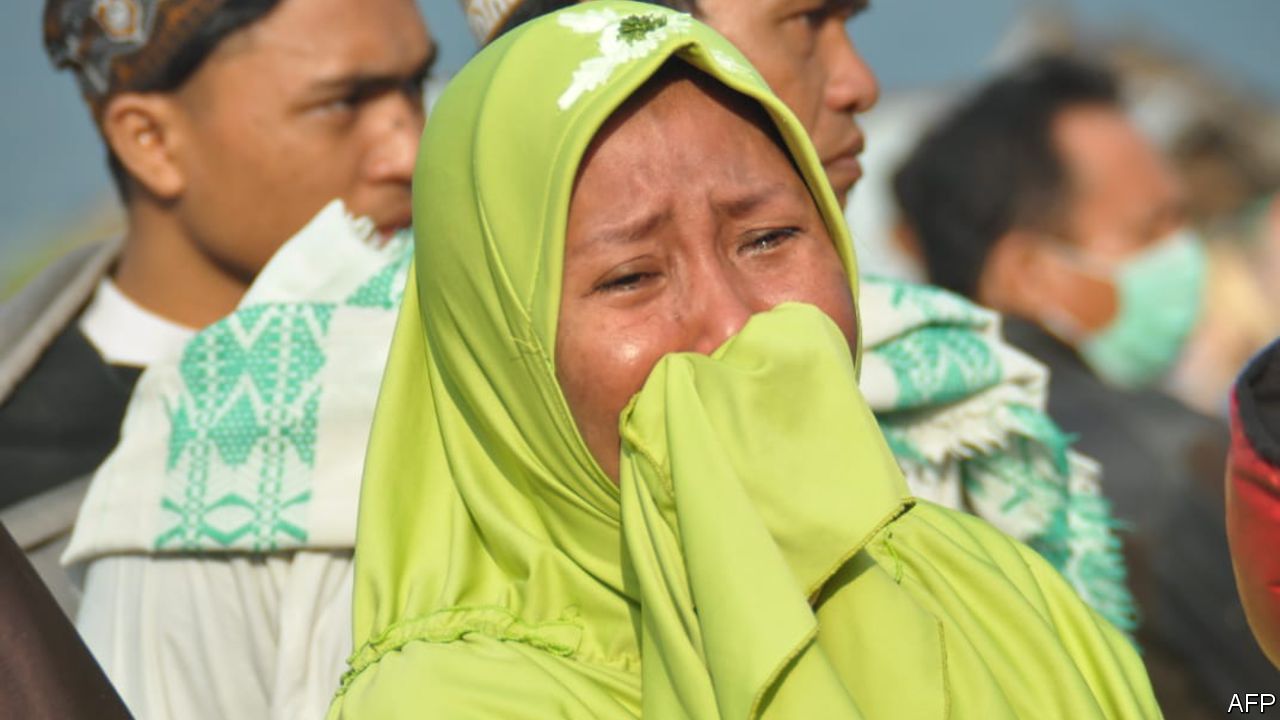
JUST after 5:30pm on September 28th, a three-metre-high tsunami struck Palu and Donggala, two cities on Sulawesi, an island in the east of Indonesia. It had been triggered by a 7.4-magnitude earthquake out at sea 30 minutes earlier. The wave was devastating. Bridges were smashed, homes toppled and cars swept away. An eight-storey hotel, with around 60 guests, was reduced to rubble. Many people have been left without shelter or electricity. Television footage showed looters stealing food from a shop. The current death toll stands at 832; many others have been injured. The fate of thousands more is unknown.
Such disasters are not unusual in Indonesia. The archipelago stretches along the Pacific Ocean’s “ring of fire”, which has around 130 active volcanoes. Earthquakes and tsunamis are common. Since 2017, 197 earthquakes of magnitude 6 or more have taken place across the world; 18 were in Indonesia. In 2004 a tsunami flattened huge parts of Aceh and Nias, killing over 100,000 people. It is the country with the second-highest risk of tsunamis, after Japan, according to an index compiled by the European Commission.
Yet the death toll this time is particularly high. That is partly because Central Sulawesi, the province which was struck, is among the poorest in Indonesia. And unlike in much of the country, the number of people who are poor has not fallen in the past few years. Wages lag behind the national average. Infrastructure is ropey; potholed roads are common.
And a mistake by officials at the BNPB, the national disaster-relief organisation, could have made matters worse. They issued a tsunami warning soon after the earthquake struck—only to revoke it 30 minutes later. Critics say this caused confusion, and is why hundreds of festival-goers failed to evacuate a beach at Palu. BNPB officials say the tsunami struck while the warning was still in effect.
Either way, this has already been Indonesia’s deadliest year for natural disasters since 2010. An earthquake in Lombok, a tourist island near Bali, in August already killed more than 500.
The actual death toll is likely to be higher. Search-and-rescue efforts have not managed to make contact with many small towns and villages that were in the path of the tsunami. That is because roads have been blocked and power outages have cut lines of communication. Jusuf Kalla, the vice-president, who is from Sulawesi, has warned that casualties could run into the thousands. That would make this the one of the worst natural disasters since the tsunami in Aceh.
And the experience in Lombok is not promising. Aftershocks meant that the island was shaken by three big quakes over the course of ten days. More recently health officials have declared a state of emergency following an outbreak of malaria. Many families have refused to sleep indoors and camped in tents, making them more vulnerable to mosquitoes. More misery may be on its way for the people of Sulawesi.








